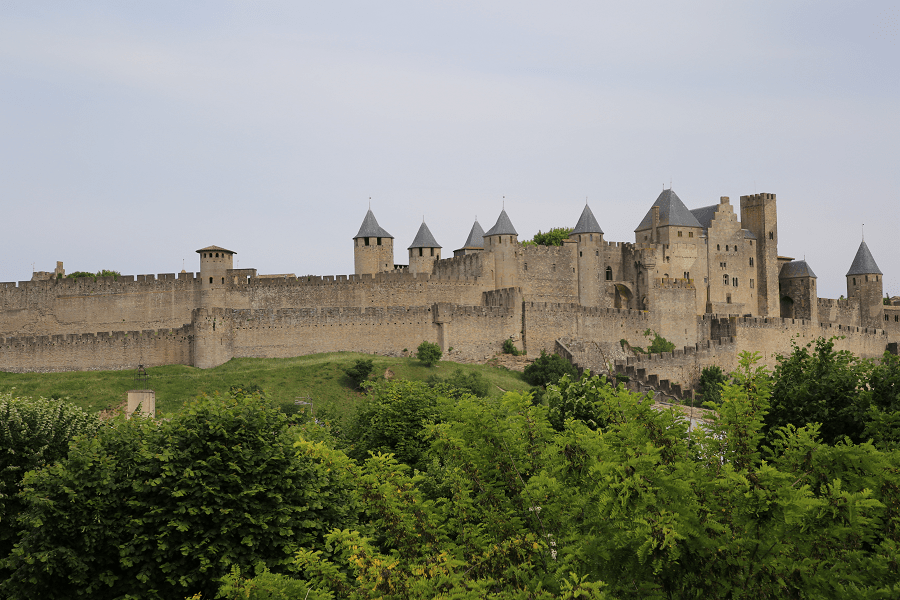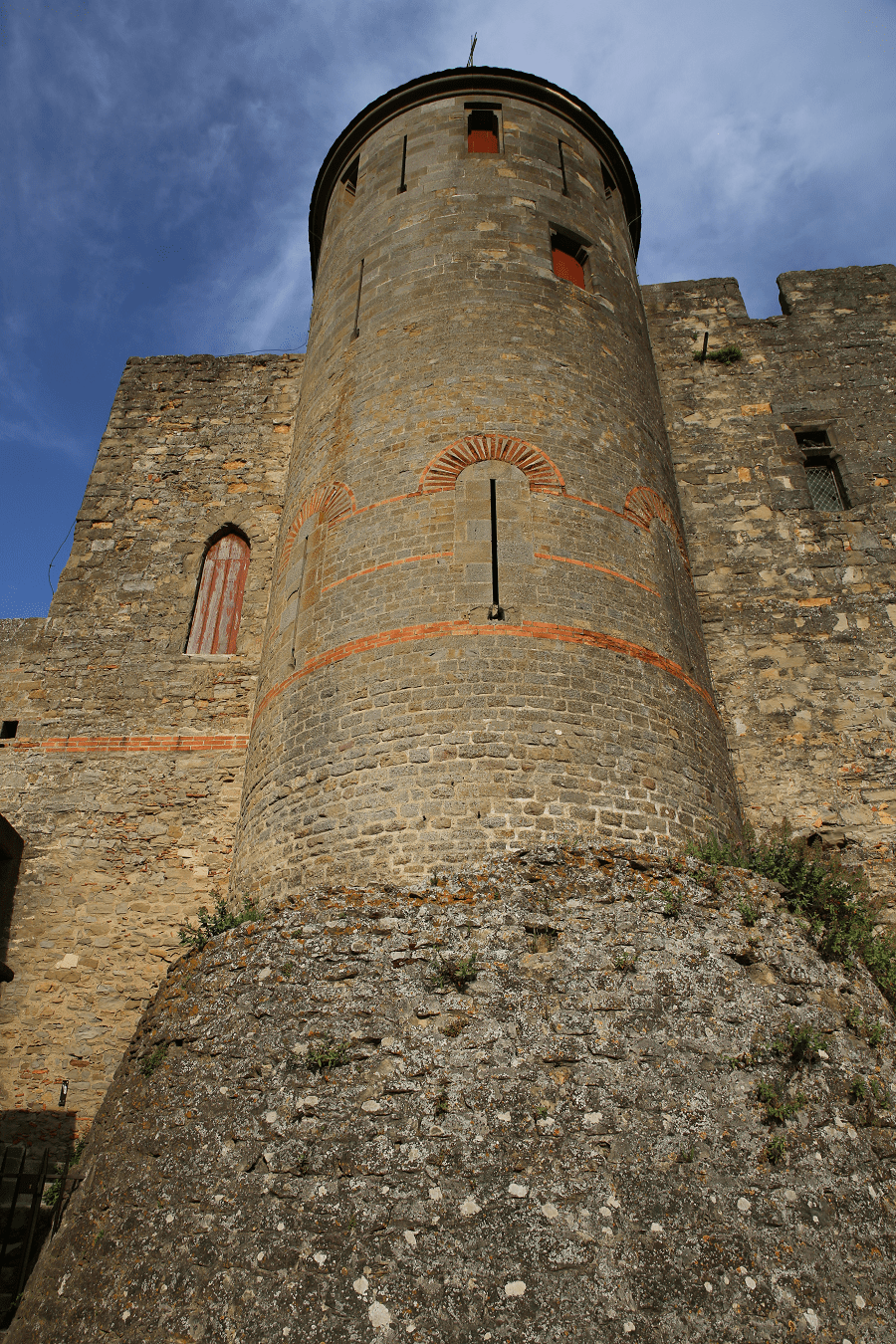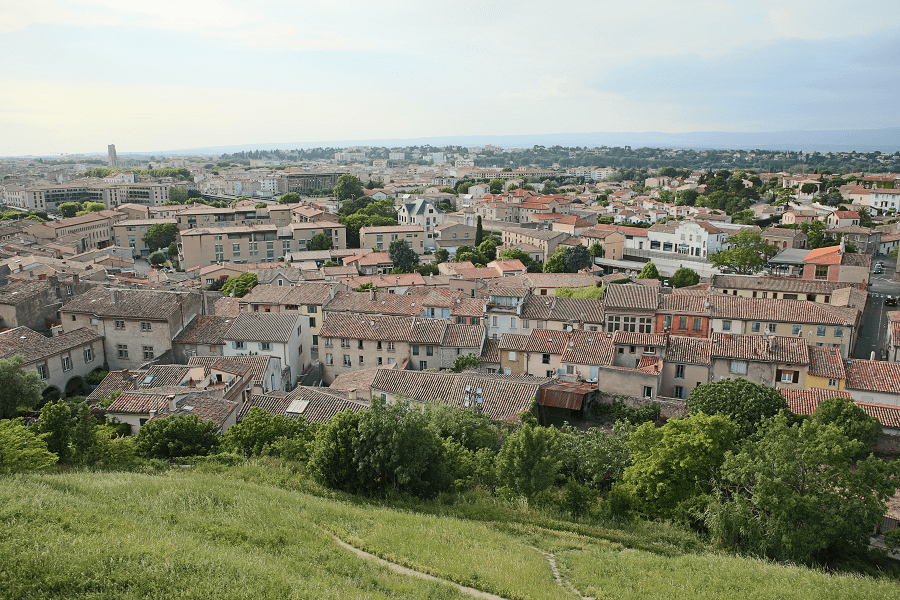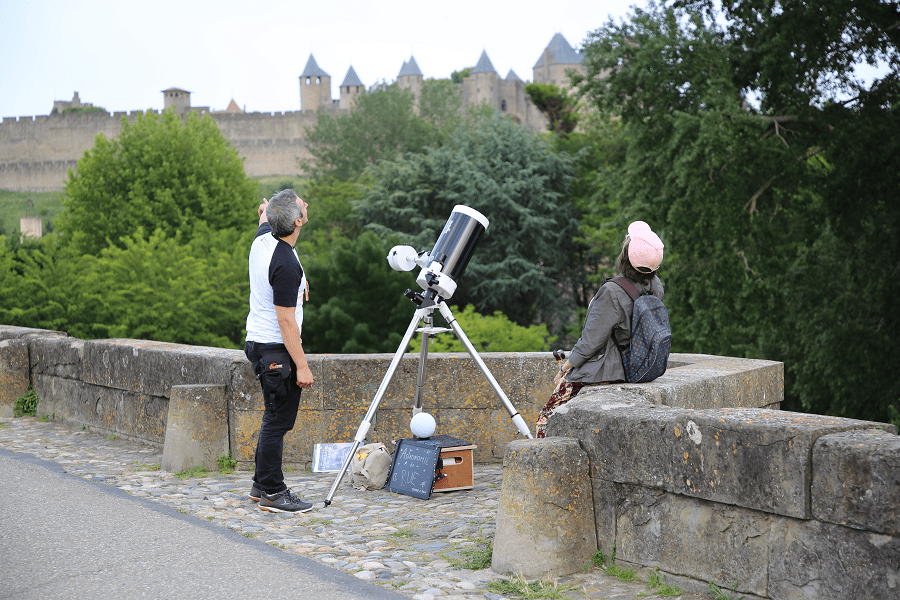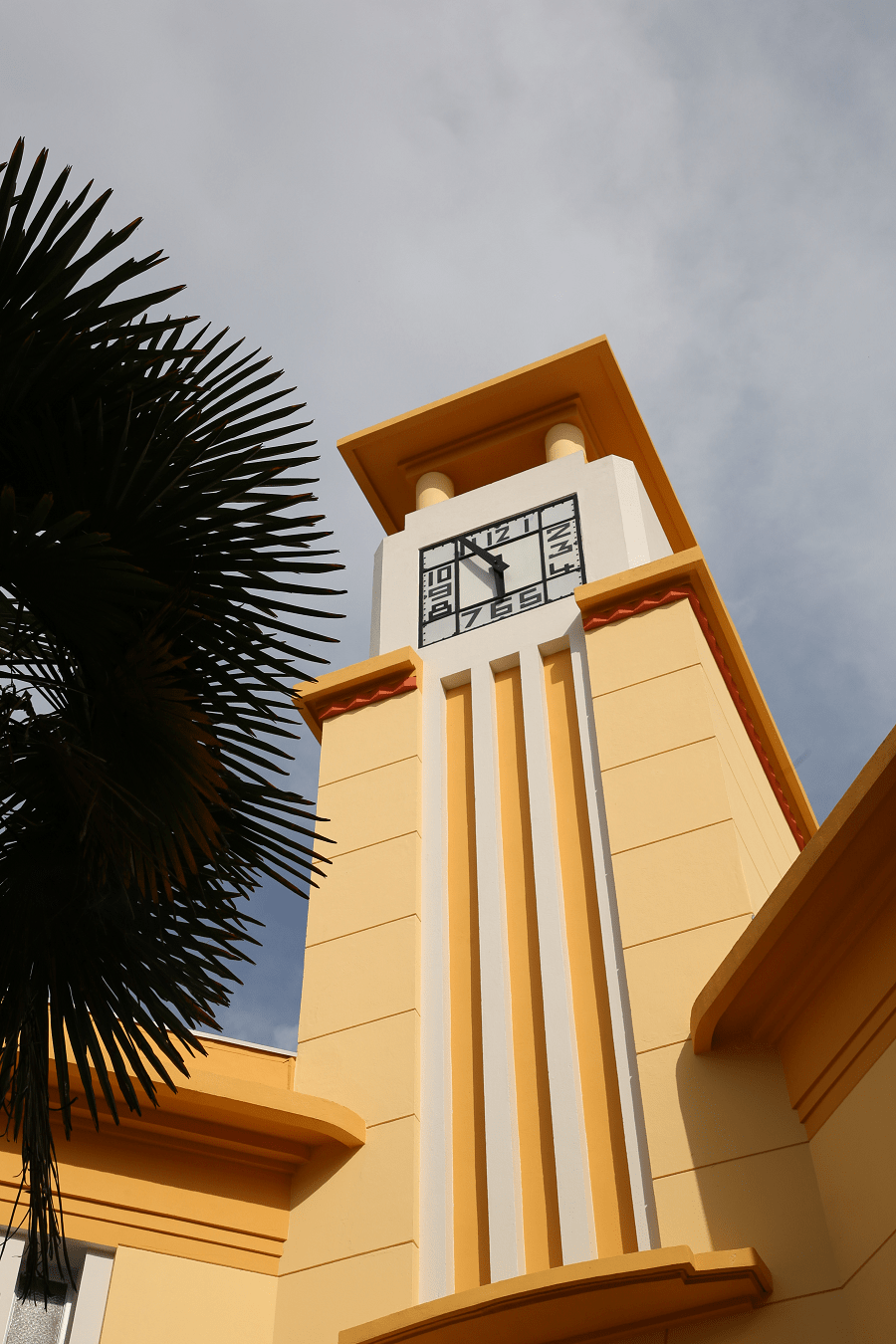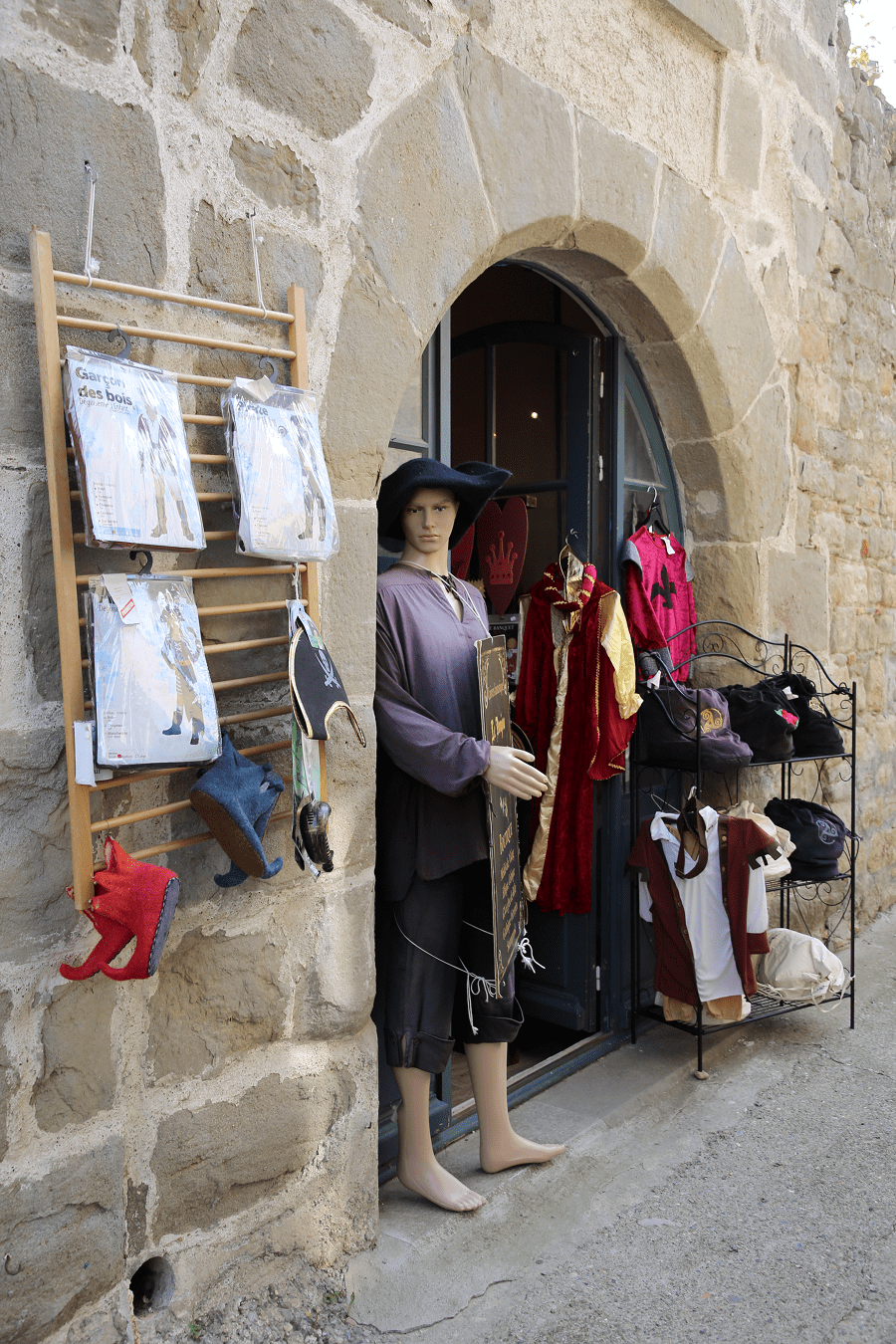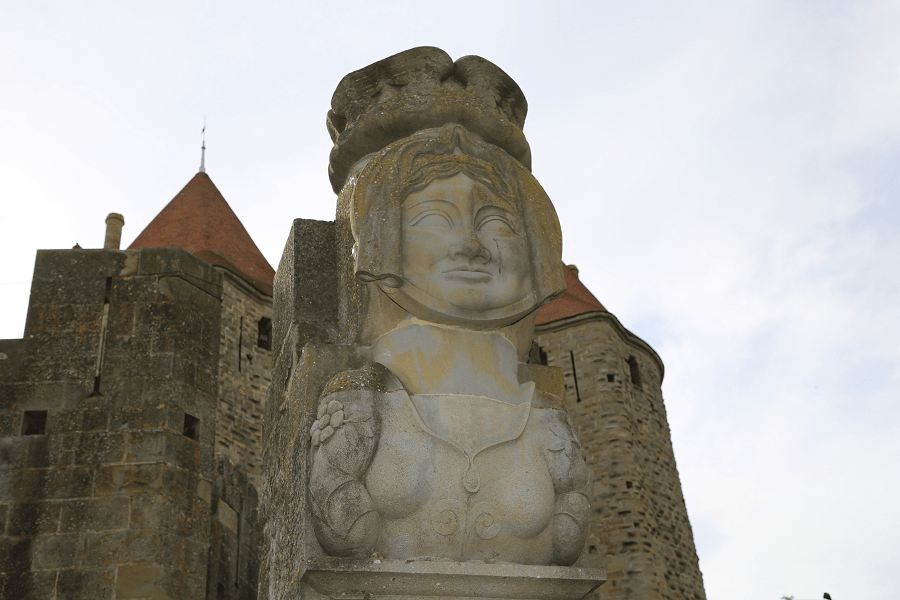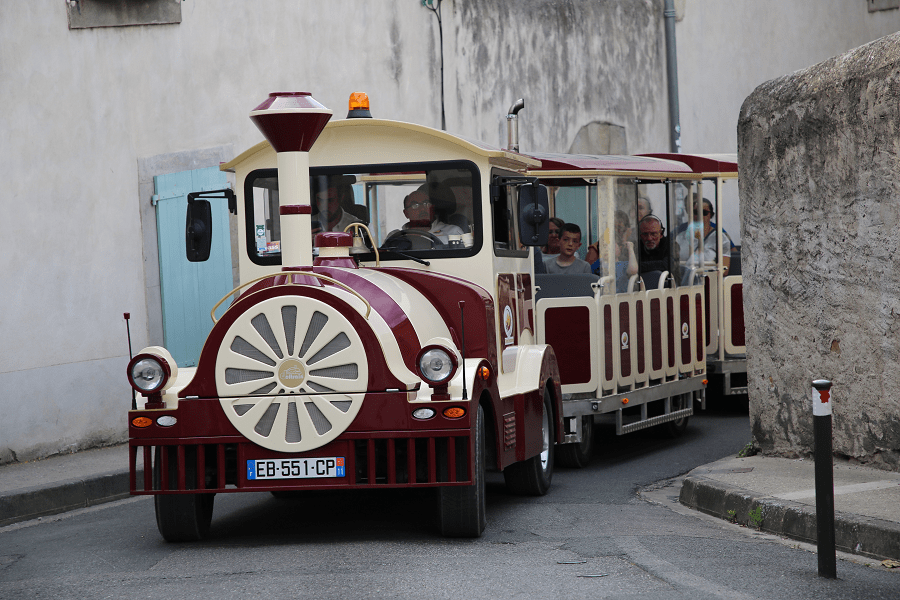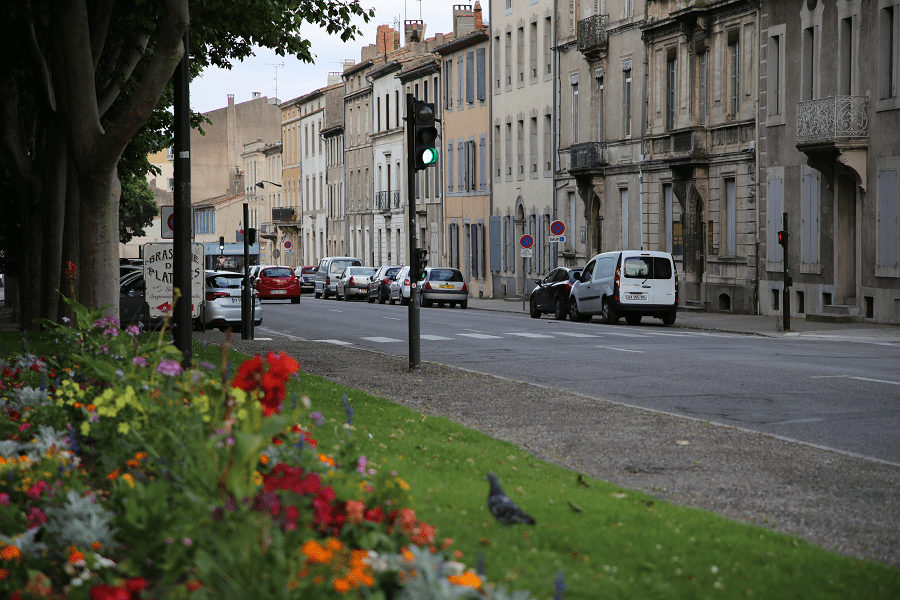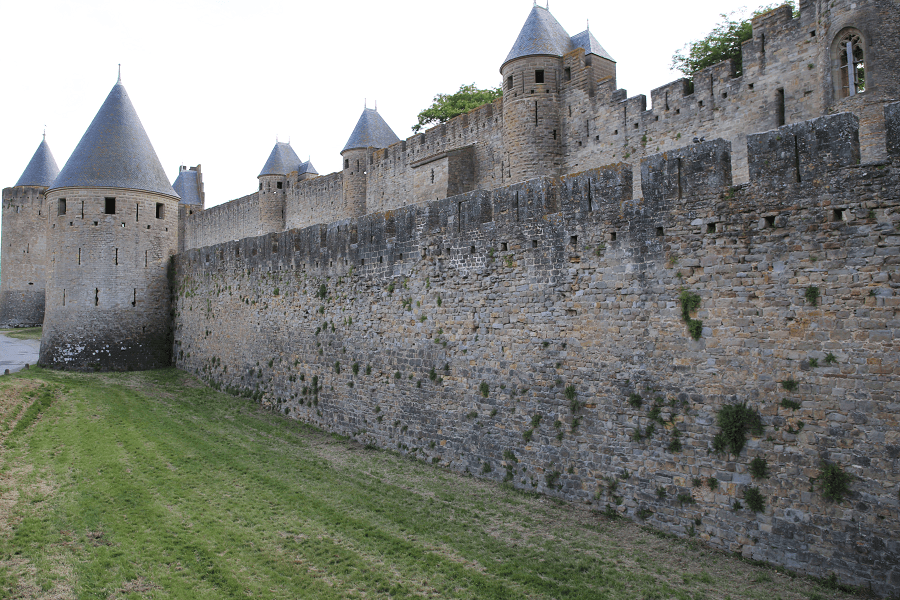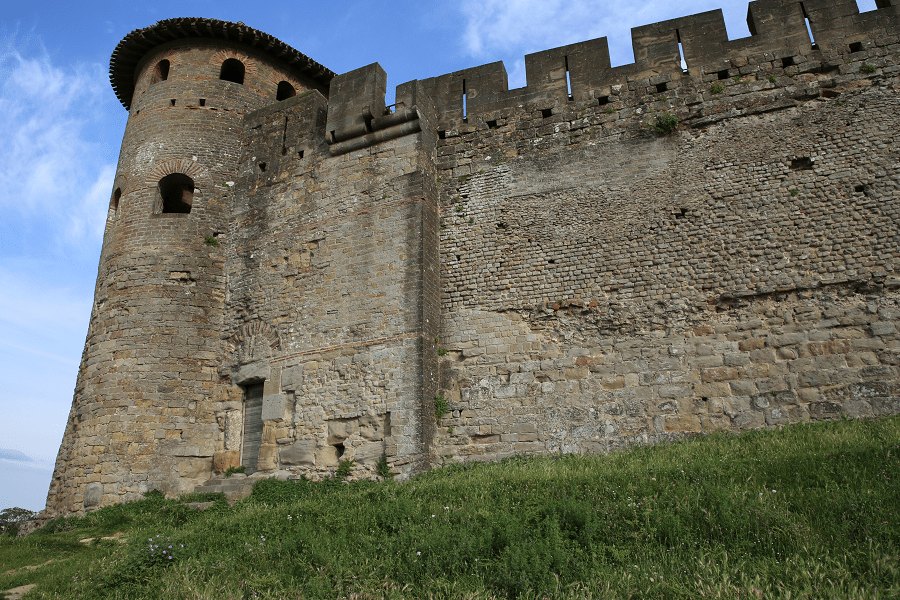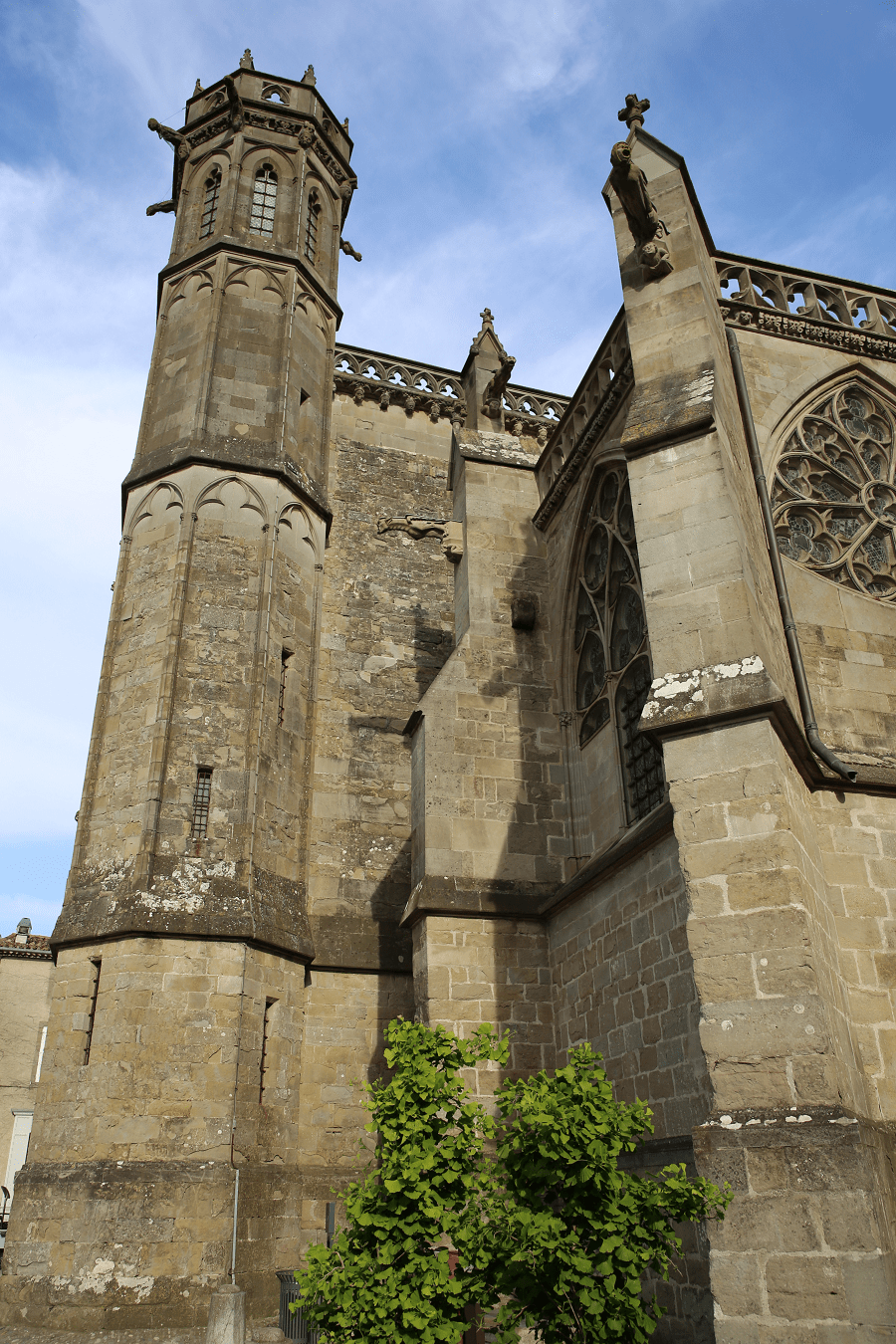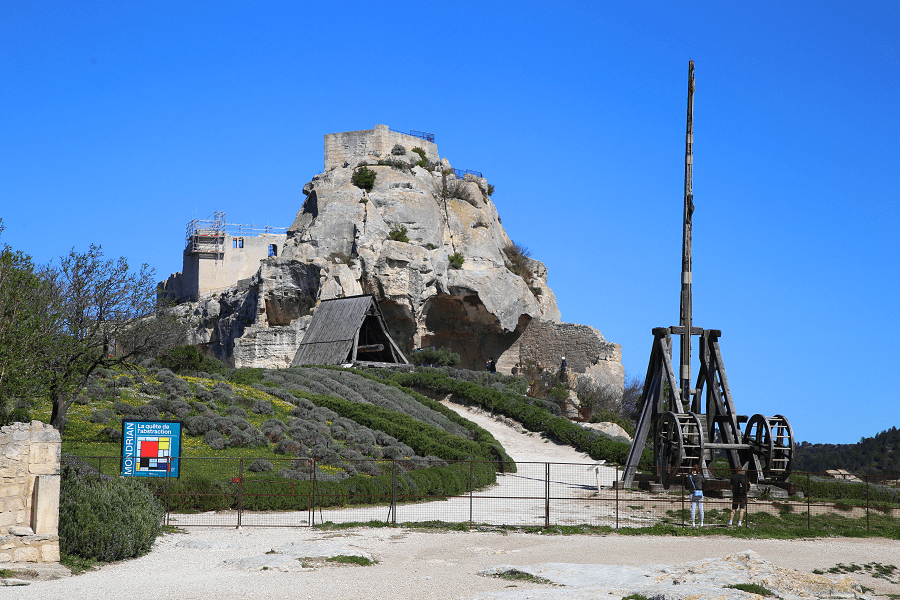Carcassonne (fr. Carcassonne) is a fortified town in the Aude department on the river Aude, Occitania Region, France. ‘The town is one of the most important historical sites in France; it is not only because of the ancient fortress itself but also due to its size. It consists of a picturesque medieval town with streets, houses, churches inside three lines of fortified walls.
Its citadel, known as the Cité de Carcassonne, is a medieval fortress dating back to the Gallo-Roman period and restored by the theorist and architect Eugène Viollet-le-Duc in 1853. It was added to the UNESCO list of World Heritage Sites in 1997 because of the exceptional preservation and restoration of the medieval citadel.
Carcassonne is an important point on the GR78 hiking trail, which is also known as the The Way of Piemont (Camino de Santiago) to Santiago de Compostela.
According to Gérard Larrat, mayor of the city, Carcassonne has 19 “quality labels” in one mandate, including the heritage: the “City of Art and History”.
The city is an important stop on the Canal du Midi tourist route.
History and legends
The town is along a historical route connecting the Atlantic Ocean with the Mediterranean Sea and the Massif Central with the Pyrenees. People have inhabited this place since Neolithic times. The first mentioning of Carcassonne dates back to the first century BC. Galls established the first settlement here. We know that Romans recognized the strategic importance of this place; they conquered it in the year 118 BC. Carcassonne citadel, the medieval fortress, dates back to the Gallo-Roman period.
Visigoths took control over the oppidum (the town-fortress from the Roman Empire surrounded by a moat and earth mound) in the V century; Saracenes conquered it in the VIII century, franc got rid of them. Francs called it Karkashuna town.
The town of Carcassonne has its own legend dating back to the beginning of the ninth century. It was at that time that the Saracens ruled in the city and Charles the Great (Charlemagne) decided to conquer it. The town’s siege lasted five years. A lady named Carcas stood at the head of the city’s defensive knights in the sixth year. The town residents experienced hunger, were greatly exhausted, and were on the verge of life and death.
All they had left was wheat and a single piglet. Lady Carcas decided to try to demoralize her opponents with a trick: she fed the piglet and ‘accidentally’ threw it from the city walls. Seeing the fattened piglet, Charlemagne thought that the town was full of food, lifted the siege, and withdrew his starving troops. Seeing the enemy retreat, Lady Carcas ordered to ring all the bells. One of Charlemagne’s men exclaimed: “The carcass is ringing!” (Carcas sonne! in French). This explains the origin of the name of the town of Carcassonne.
Carcassonne became famous for its role in the Crusades when it was a stronghold of the Occitan Cathars. Abbot Arnaud Amalric crusader army forced the town to surrender in August 1209. They imprisoned Viscount Raymond-Roger de Trencavel, and he died three months later under mysterious circumstances in a dungeon in his own town. They allowed Carcassonne’s residents to leave the town and so the exiles left Carcassonne in what they were wearing. Simon de Montfort became the new Viscount.
The town fell under the rule of the kingdom of France in 1247 and became a border fortress between France and the Aragonese Еmpire in accordance with the Treaty of Corbeil (1258).
King Louis IX founded a new part of the town across the river. He and his successor Philip III built its outer ramparts. The fortress was really impregnable. Edward Black Prince (Prince Noir, also known as Edward of Woodstock) could not capture the town during the Hundred Years’ War, although his troops destroyed the lower part of Carcassonne.
It is known that Charles IX visited Carcassonne during his royal journey through France (1564-1566), accompanied by the court and the Great Kingdom: his brother Duke Anjou (le Duc d’Anjou), Henry of Navarre (Henri de Navarre), Bourbon and Lorraine Cardinals (les Cardinaux de Bourbon et de).
The Treaty of Pyrenees transferred the Roussillon border province to France in 1659, and Carcassonne’s military powers decreased. Its fortifications were abandoned and the city became the main economic center, concentrating on the wool and textile industries. A sewing factory opened in the town and the production of fabrics brought prosperity to it. They built luxurious hotels in the town and a water supply appeared. Old walls were demolished in the eighteenth century.
However, the architect Eugène Viollet-le-Duc restored the walls in 1853. They restored the medieval fortification (more than 3 km of walls with 52 towers), and it was here that some episodes of the film “Robin Hood: Prince of Thieves” were shot much later on.
German troops occupied the town of Carcassonne in 1944 and used the castle as a storehouse for ammunition and explosives. They expelled residents from the town. Joë Bousquet, (a French poet and writer, bedridden since the age of 21 due to wounds during the First World War, and commander of the Legion of Honor), was extremely outraged by this fact and wrote to all authorities demanding the liberation of the town, which was considered an international work of art.
Tourism, main sights and attractions
The Town of Carcassonne has been a UNESCO World Heritage site since 1997.
The two most important quarters in Carcassonne are Cite (upper town) and Bastide (lower town).
Three rows of ramparts surround Cite. The whole town is a medieval monument. There are two entrances to the fortified town. The main entrance is through the main gate and the bridge from Nadaud street. The second entrance is through the lower gate, which you can arrive to via Saint Gimer church.
Admission is free in Cite; it is just a town district, albeit a tourist-oriented one. The main attraction is the Count’s Chateau (Chateau Comtal), in which you can also find the museum. Opening hours are from 10:00 to 18:00 (daily except holidays).
Gothic-style Saint Nazaire Basilica is in Cite’s central square. It is open for visits from 9:00 to 12:00 and from 14:00 to 18:00.
In the rest of the citadel there are souvenir shops, cozy restaurants and pastry shops; everything is decorated in a traditional medieval style.
In the Trivalle quarter between the upper and lower Carcassonne district, there is the Old Bridge (Pont Vieux). The lower district is in the shape of a hexagon, at the corners of which rise the bastions. The streets are at right angles to each other.
Central Square of Bastide is Carnot Square. There is a fountain and many outdoor cafes on the Central Bastide popular among the locals and tourists.
Many narrow streets of Lower Carcassonne are only for pedestrians. The main street of the lower town is Avenue Clemenceau Courtejaire.
Bastide preserves ancient mansions, houses from St. Louis times, and the Palace of Justice.
It is also worth stopping at Saint Vincent church to admire its beautiful stained glass windows. The church’s tower offers magnificent views over Carcassonne, the lower city, and the fortress. Climbing the tower is free. The church is open to visitors from 10:00 to 12:00 and from 14:00 to 17:30.
Shopping
You can get great pleasure from walking among the citadel’s souvenir shops. You can buy clothes, jewellery, perfumes, and find some original gifts here.
Cuisine and restaurants
Most restaurants are concentrated in the old city and uphold the festive and colorful atmosphere of the Middle Ages. There are also snack bars, bars and cafes.
The town’s traditional dish is cassoule (a bean stew with duck legs and aromatic spices). They serve it in clay pots, which is said to give it its special taste. You can also try foie gras (duck liver pate), or duck breast with confiture (a kind of jam served with meat or cheese).
Given that Carcassonne is one of the winemaking centers, we recommend trying a glass of the soft and aromatic local wine.
There are 6 Michelin list restaurants in the city:
- La Table de Franck Putelat, 80 chemin des Anglais, au Sud de la Cité, Modern Cuisine, Creative cuisine (2 stars)
- La Barbacane, Place Auguste-Pierre-Pont, Classic Cuisine (1 star)
- Brasserie à 4 Temps, 2 boulevard Barbès, Traditional Cuisine
- Comte Roger, 14 rue Saint-Louis, Traditional Cuisine, Modern Cuisine
- La Table d’Alaïs, 32 rue du Plô, Modern Cuisine, Traditional Cuisine
- Domaine d’Auriac, 535 route de Saint-Hilaire, Classic Cuisine
How to get to Carcassonne?
Distances by car from the main French cities:
From Paris (tolls): 7 hr 36 min (769 km) via A20
From Biarritz (tolls): 3 h 40 min (395 km) via A64
From Dax (tolls): 49 min (67.1 km) via A61
From Nantes (tolls): 6 h 14 min (676 km) via A10 and A62
From Bordeaux (tolls): 3 h 17 min (335 km) via A62 and A61
From Toulouse (tolls): 1 h 6 min (93.4 km) via A61
From Monaco (tolls): 4 h 50 min (491 km) via A8 and A9
From Nice (tolls): 4 h 36 min (470 km) via A8 and A9
From Marseille (tolls): 3 h 4 min (312 km) via A9
From Avignon (tolls): 2 h 23 min (239 km) via A9
From Montpellier (tolls): 1 h 40 min (152 km) via A9 and A61
From Béziers (tolls): 1 h 3 min (89.5 km) via A9 and A61
From Perpignan (tolls): 1 h 16 min (116 km) via A9 and A61
Distances by car the main European cities:
From Andorra (tolls): 2 h 50 min (178 km) via D119
From Barcelona (tolls): 3 hr 47 min (306 km) via AP-7
From Madrid (tolls): 8 hr 42 min (886 km) via A-1 and A64
From Monaco (tolls): 5 hr 1 min (492 km) via A8 and A9
From Moscow (tolls): 37 hr (3,417 km) via E30/M1
From Belgrade (tolls): 18 hr 37 min (1,796 km) via E70
From Istanbul (tolls): 29 hr (2,745 km) via E70
From Bern (tolls): 7 hr 15 min (750 km) via A9
By Train
The town has a train station that connects Carcassonne with Toulouse (travel time 1 hour, Narbonne (40 minutes, Beziers (1 hour 9 minutes) and Montpellier (1 hour 59 minutes).
By plane
Carcassonne has an airport, which offers regular connections with the UK (London, Liverpool, and Nottingham), Ireland (Dublin, Cork, and Shannon), and Belgium (Charleroi).
Main information
Area: 65.08 sq. km
Population: 46 218 (2021)
Coordinates: 43°13′N 2°21′E
Languages: French, Occitane
Currency: euro
Visa: Schengen
Time: Central-European UTC +1
See here Pyrenees travel guide
See here France travel guide
See here Spain travel guide



